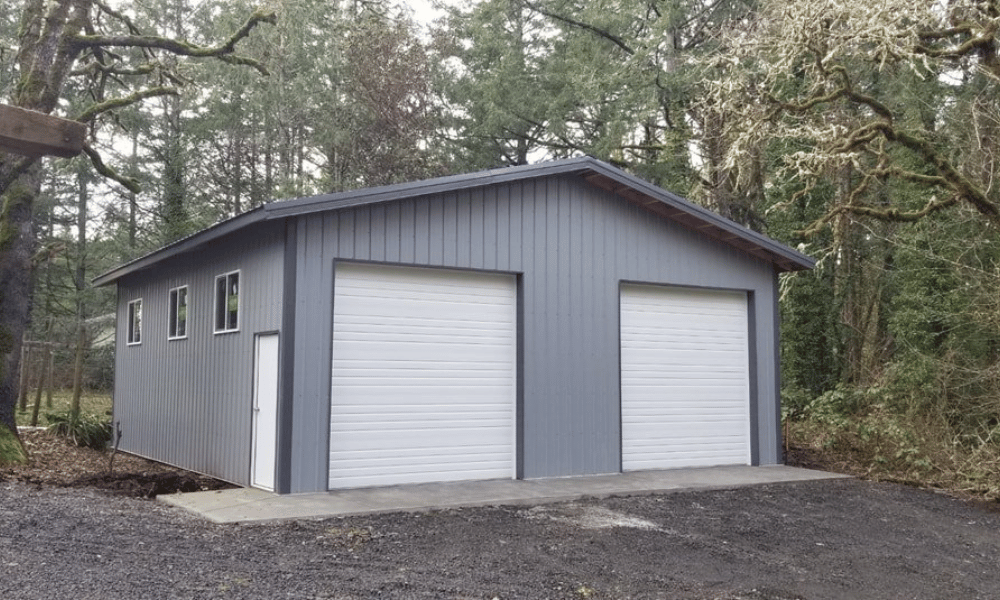Introduction
When it comes to designing a pole barn garage, airflow is often an overlooked yet crucial element. Proper ventilation not only helps maintain the quality of the air inside but also plays a significant role in preserving your equipment, vehicles, and other belongings. One of the most effective methods of optimizing airflow is through strategic window placement. In this article, we will explore the intricacies of positioning windows for maximum airflow in a pole barn garage, ensuring that your space remains cool, dry, and comfortable.
Understanding Pole Barn Garages
What Are Pole Barn Garages?
A pole barn garage is a structure built using post-frame construction techniques. These garages are known for their durability and versatility and can serve multiple purposes, from storage solutions to workshops.
Benefits of Pole Barn Garages
Cost-Effective Construction: Building a pole barn garage typically involves lower costs compared to traditional structures. Flexibility in Design: They can be customized based on individual needs. Durability: With sturdy materials, these garages can withstand harsh weather conditions. Aesthetic Appeal: Depending on your preferences, they can be designed to suit any landscape. custom pole barnThe Importance of Airflow in a Pole Barn Garage
Why Is Airflow Crucial?
Air circulation in any enclosed space prevents moisture buildup and mold growth while enhancing the longevity of stored items.
Effects of Poor Airflow
Poorly ventilated spaces may suffer from:
- Increased humidity levels Unpleasant odors Damage to stored items Higher temperatures during summer months
How to Position Windows for Maximum Airflow in a Pole Barn Garage
Assessing Your Space
Before you start placing windows, evaluate your pole barn's layout and purpose. Identify areas where natural light is beneficial and consider the prevailing wind direction.
Factors to Consider
Orientation: Which way does your garage face? East-facing windows catch morning sun; west-facing ones get afternoon heat. Size and Shape: Larger windows allow more air but require careful consideration regarding placement. Local Climate: Different regions experience varying wind patterns that can affect airflow efficiency.Window Types for Optimal Airflow
Awning Windows
Awning windows open outward from the bottom, creating an effective way to catch breezes even during rain.
Casement Windows
These are hinged at the side, allowing for maximum airflow when fully opened.
Sliding Windows
Ideal for larger openings; sliding windows provide ample ventilation without protruding outward.
Ideal Placement Strategies
Cross-Ventilation Techniques
Cross-ventilation involves placing windows on opposite walls to promote airflow throughout the entire space effectively.
Steps for Implementing Cross-Ventilation:
Identify Wind Direction: Understand how winds typically flow through your area. Position Windows Accordingly: Place one set of windows on the side facing the incoming breeze and another set directly opposite.High vs Low Windows
Having both high and low windows enhances airflow dynamics by facilitating convection currents—warm air pole barns rises while cooler air enters from below.
Incorporating Additional Ventilation Systems
While window placement is vital, combining it with other systems can lead to optimal results.
Roof Vents
Roof vents allow hot air to escape efficiently by utilizing thermal buoyancy.
Exhaust Fans
Incorporating exhaust fans enhances ventilation when natural breezes aren't sufficient—especially during peak summer months.
Seasonal Adjustments for Maximum Efficiency
Understanding how seasons affect ventilation can help you adjust window positions accordingly.

Summer Strategies
Open all available vents early in the day to allow cooler morning air inside before closing them as temperatures rise later on.
Winter Considerations
To retain heat during winter months, use insulated window covers or strategically close certain windows while keeping others open for necessary airflow.
Maintaining Your Windows for Optimal Performance
Regular maintenance ensures that your windows function effectively over time:
Inspect Seals: Check seals regularly and replace if damaged. Clean Regularly: Dust buildup can hinder airflow; thus regular cleaning is essential. Lubricate Hinges: Ensure smooth operation by lubricating moving parts as required.FAQs About Positioning Windows in Pole Barn Garages
1. What type of windows are best for ventilation?
Casement or awning windows are ideal because they can be opened wide without obstructing airflow pathways.
2. How many windows should I install?
This depends on your garage size but having at least two sets of opposing windows promotes better cross-ventilation.
3. Can I use window screens?
Yes! Screens help keep insects out while allowing fresh air to circulate freely through open windows.
4. Is it better to have large or small windows?
Larger windows facilitate more airflow but must be balanced with structural integrity considerations; smaller ones are easier to manage regarding temperature control.
5. Do roof vents really make a difference?
Absolutely! They help release trapped hot air efficiently—making your space cooler overall!
6. How often should I clean my garage windows?
Aim for at least twice yearly; however, if you're near dusty areas or like in coastal regions with salt spray—more frequent cleanings may be beneficial!
Conclusion
Positioning windows strategically is essential for maximizing airflow in a pole barn garage. By understanding various factors such as local climate conditions, window types, and placement strategies—including cross-ventilation—you can create a comfortable environment tailored specifically to meet your needs while protecting valuable assets within your space effectively! As you embark on this project remember that thoughtful design paired with maintenance will yield long-lasting benefits!